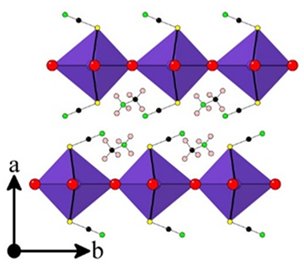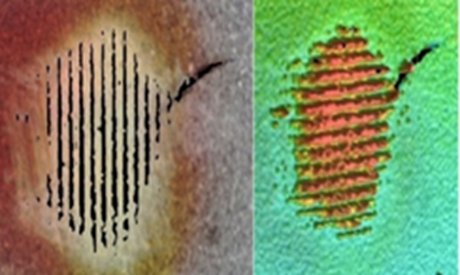Research
Thrust 1: Tailoring one-dimensional inorganic perovskite nanofibers for enhanced physical and chemical properties
FSU Participants: Zhiping Luo, Shubo Han; CHRNS Participants: Julie Borchers, Dan Neumann
Perovskites possess diversified composition, structure and properties, with virtue of customizable chemical composition and ease in generating non-stoichiometric defects. Perovskite minerals have exhibited unique ferro- and piezoelectric, colossal magnetoresistive, superconducting, semiconducting, and catalytic properties. As energy storage has been a key element in sustainable energy, the perovskites have been studied for supercapacitors as a hot research topic (Fig. 1). Since perovskites offer favorable direct band gap, large absorption coefficient, and high hole mobility, they are also promising light-harvesting materials in optoelectronic devices, such as photodetectors, lasers and light-emitting diodes. With the aid of neutron scattering, this research will explore new enhanced physical and chemical properties by delicately tailored inorganic nanoscale perovskite nanofiber architectures through changing the shape, dimensionality, size, processing and chemical doping.

Fig. 1. SrMnO3 perovskite nanofibers. (a) SEM image; (b) TEM image and electron diffraction pattern; (c) galvanostatic charge/discharge curves at different current densities. (Published on Ceramics International, https://doi.org/10.1016/j.ceramint.2018.08.313)
Thrust 2: Optoelectronic Properties of Two-Dimensional Hybrid Perovskites
FSU Participant: Bhoj Gautam; CHRNS Participants: Julie Borchers, Dan Neumann
Most advanced technologies are based on processing materials into devices to manipulate electronic conduction, optical absorption, and emission. Detailed understanding of electronic and optical properties of materials is essential. The long-term research goal of this project is to advance the understanding of the relationship between the chemical structure, performance, and sample fabrication/processing in two-dimensional (2D) hybrid perovskites (Fig. 2) to rationally guide selection of the best materials for optoelectronic applications. The intellectual focus of the partnership between FSU and CHRNS is on collaborative work on structural characterization of 2D hybrid perovskites for microscopic understanding of these structures using neutron scattering techniques. Here we propose a comprehensive investigation of structural, optical and electronic properties of 2D hybrid perovskites to provide information that will assist in guiding clear advances in semiconductor physics. This will be achieved by measuring fundamental properties including lifetime, structure, and device efficiency. This research will potentially find new optoelectronic properties of two-dimensional hybrid perovskites through the study of isotope effects, cation substitution, structural defects and structural dimensionality

Fig. 2. Crystal Structure of (CH3NH3)2Pb(SCN)2I2.
Thrust 3: Synthesis, Manipulation, and Characterization of Nanomaterial Pseudocrystals
FSU Participant: Daryush Ila; CHRNS Participants: Julie Borchers, Dan Neumann
The objective of this research is to better understand the similarities between photon channeling and ion-channeling as proposed by Kukhtaev, propagation of photon and ion beams in coherent channeling, described by the analogy drawn between the Maxwell equation and the Schrödinger equations and the limitations of such assumption. The intellectual focus is on the characterization of nanostructures using neutron scattering methods. Comparing the ion channeling results with and without holographic grating indicates that the ion travels through a narrower channel in the region of the crystal where a holographic electric field grating has been recorded. The mix of gold nanocrystals and silver nanocrystals in Infrasil (Fig. 3) not only changes the index of refraction step by step, the regimented nanostructures are also polarized and can be observed by polarized 3D optical microscope. This research will achieve enhanced electrical, optical and thermal properties through surface modifications with nanocrystals.

Fig. 3. Polarization of gold nanocrystals in infrasil.
